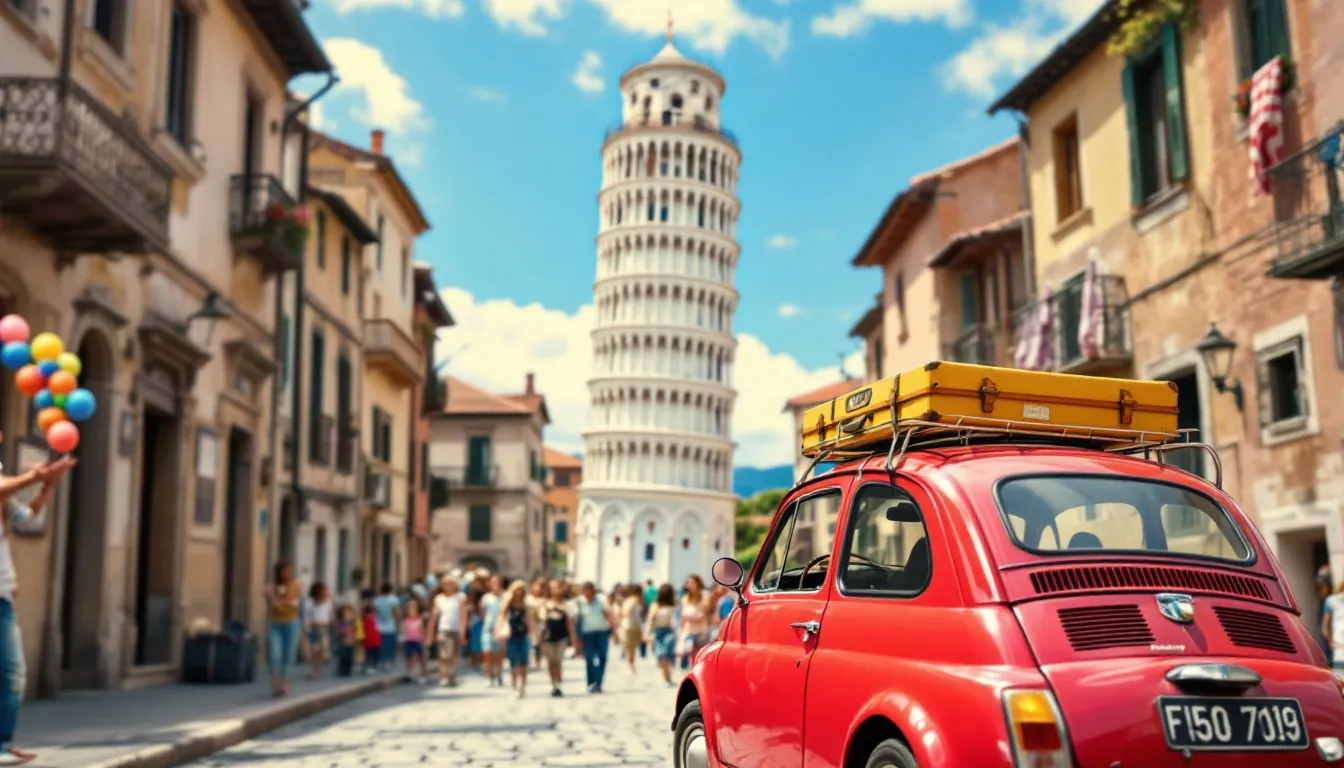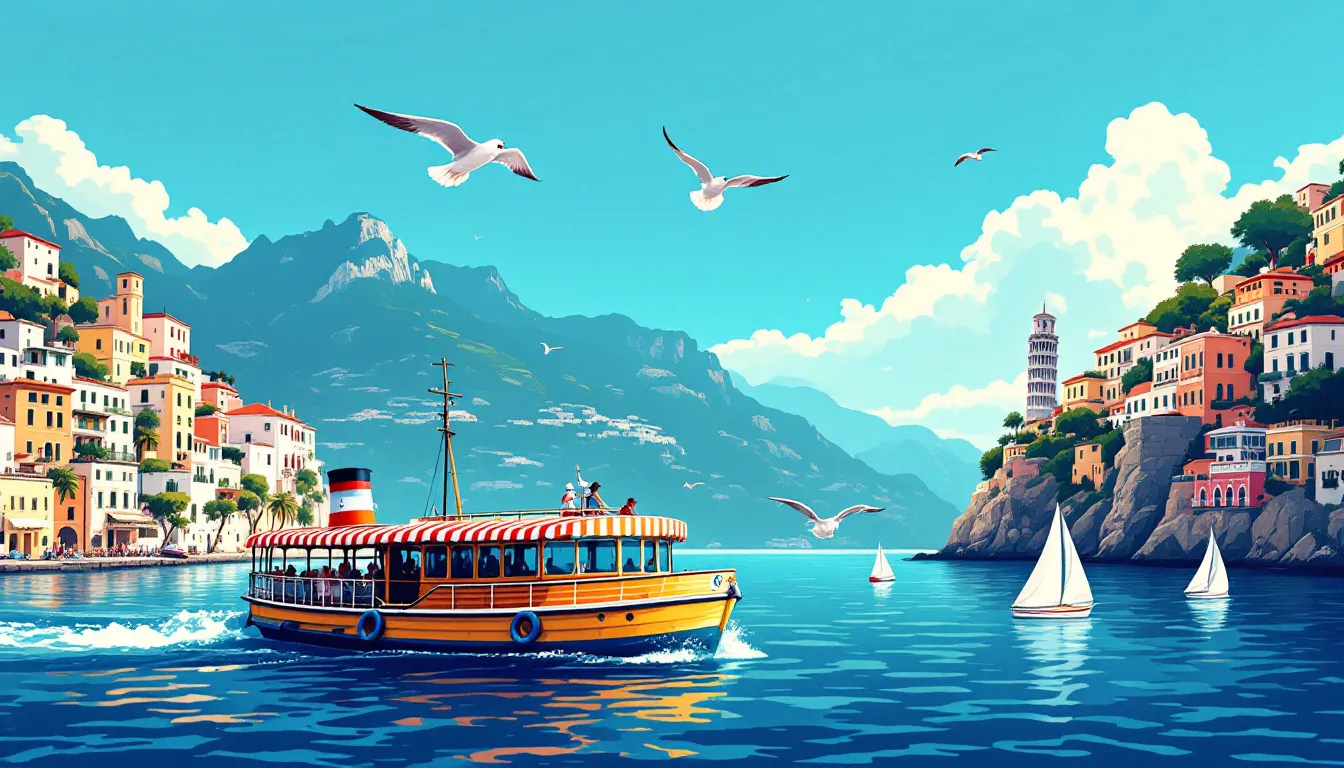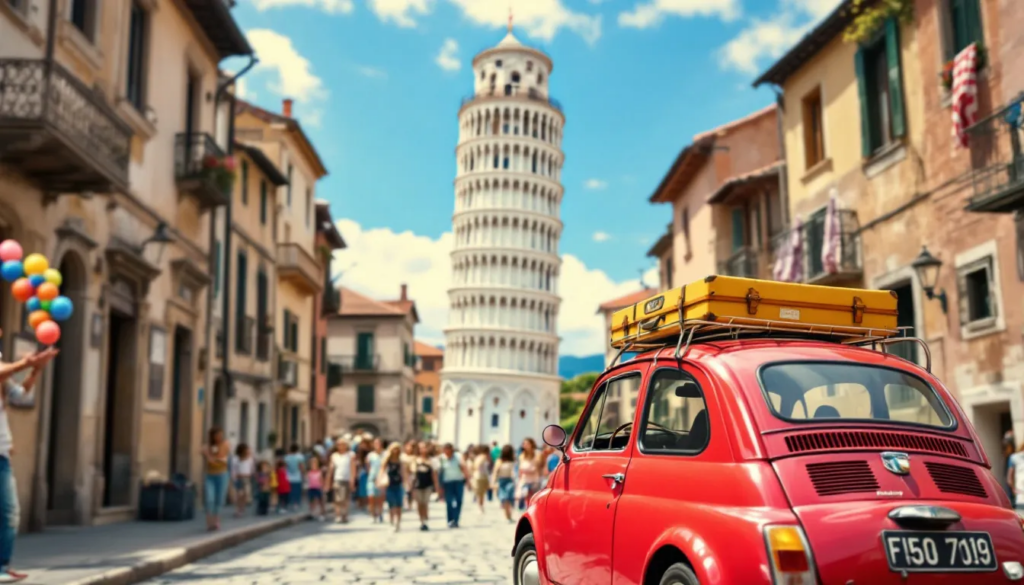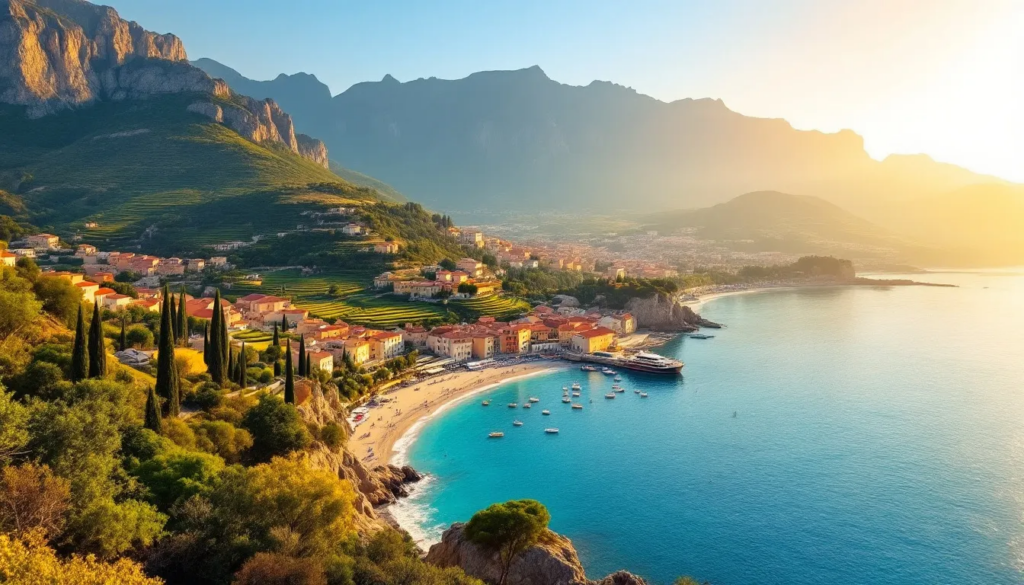Wondering how to travel around Italy easily and efficiently? This guide will help you navigate the country using its various transportation options like trains, buses, car rentals, and even ferries. From booking tickets to exploring hidden gems, we’ve got practical tips to make your journey smooth and enjoyable.
Key Takeaways
- Train travel is the best way to explore Italy, with high-speed and regional trains offering convenient options for city and countryside journeys.
- Renting a car provides the freedom to reach remote regions and hidden gems, while planning around road conditions and local regulations is essential.
- Buses and ferries offer budget-friendly alternatives for travel, connecting smaller towns and islands while reducing costs compared to other transport methods.
Train Travel: The Most Efficient Way to See Italy

Train travel in Italy offers a convenient way to explore various destinations, making public transport enjoyable with scenic routes and efficient service. Popular transportation methods in Italy include trains, buses, and car rentals.
Italy’s trains fall into three main categories: regional, national, and high-speed, each suited to different travel needs. Traveling by train in Italy offers scenic routes and efficient service.
Booking Train Tickets
Booking train tickets in Italy is easy, with options like online websites (Trenitalia, Italo), train station ticket machines, and mobile apps.
Tickets purchased online don’t need validation, but those bought at stations must be validated before boarding. Booking high-speed train tickets well in advance—typically 30 to 60 days—can save money. If you want to secure your travel plans, you can buy tickets online for convenience.
Trenitalia and Italo offer discounts for advance purchases, like 40% off Intercity tickets on weekends through the Weekend Return Offer.
High-Speed Trains for Major Cities
High-speed trains, especially the Frecciarossa, provide fast travel between major cities like Rome, Milan, Florence, and Venice, facilitating exploration of these bustling hubs.
Traveling from Milan to Rome takes just over three hours, maximizing your time in each city. These high-speed trains are well-connected, offering a comfortable and rapid way to traverse Italy’s main cities.
Regional Trains for Smaller Towns
To explore Italy’s picturesque towns and rural areas, regional trains are ideal. Though slower, they provide direct access to charming villages and scenic countryside, making travel enjoyable and leisurely. They are perfect for discovering hidden gems in Italy’s smaller towns.
Regional trains offer a convenient and scenic way to explore Italy’s less-traveled paths, whether for a day trip or a longer stay using regional and intercity trains.
Car Rentals: Freedom to Explore at Your Own Pace

Renting a car in Italy gives travelers the flexibility to explore off-the-beaten-path destinations at their own pace. A private vehicle allows visits to remote regions and provides convenience in rural areas, making it ideal for deeper exploration of the Italian countryside.
Thorough planning and a rental car enhance exploration, especially during the shoulder seasons, which offer good weather, fewer crowds, and lower prices.
How to Rent a Car in Italy
Major car rental companies in Italy include Avis, Europcar, Hertz, and Italy by Car. Booking in advance during summer is recommended due to high demand. Mandatory insurance covering personal and material damage is required to drive.
Renting a small compact car is advisable for easier navigation, especially through narrow streets and when finding parking in Italian cities.
Tips for Driving in Italy
Driving in Italy can be enjoyable with proper preparation. While road conditions are generally good, smaller roads may have potholes and rough surfaces. Roads are categorized as ‘Strada normale’, ‘superstrada’, and ‘autostrada’, each with different speed limits: 130 km/h (80 mph) on ‘autostrada’ and 90 km/h (55 mph) on ‘superstrada’.
Drivers must carry a warning triangle and a fluorescent safety vest. Avoid fines by watching out for ZTL zones, restricted traffic areas in many Italian cities, including Porto Torres, marked by blue signs.
Bus Travel: A Budget-Friendly Option

Buses are a cost-effective way to reach smaller towns in Italy, especially those without train stations. Suburban buses primarily connect small or remote towns, making bus travel affordable for exploring Italy.
Bus travel offers a budget-friendly and accessible way to get around using public transportation, whether for a day trip or a longer journey.
Buying Bus Tickets
Buying bus tickets in Italy is straightforward, with options to purchase online, at newsstands, tobacconists, and ticket offices. Carrying cash (euros) is advisable, especially for local vendors.
Websites like FlixBus and local operators, along with the Moovit app, help find bus schedules. Advanced booking is usually unnecessary but recommended for overnight or long-haul trips during high season.
Popular Bus Routes
Intercity buses, run by companies like Flixbus, Baltour, and Marino, connect major cities and larger cities with frequent departures. Bus travel is an affordable way to explore other cities and reach areas not covered by trains.
Buses are often more economical than other transportation methods, making them attractive for budget travelers.
Coastal and Island Hopping by Ferry

Ferry services between mainland Italy and islands like Sicily and Sardinia offer scenic coastal views and access to unique destinations. These services make it easier to explore regions that would otherwise be challenging to reach.
Ferries frequently connect Sicily with the mainland and other islands, simplifying regional exploration.
Booking Ferry Tickets
Booking ferry tickets online is simple and free of hidden fees. Travelers can compare rates across multiple companies and secure trips in advance, ensuring a smooth and hassle-free book online experience.
Key Ferry Routes
Key ferry routes to Sicily include major ports like Palermo, Catania, and Trapani. The most used ports for ferries to Sicily are Civitavecchia, Naples, and Villa San Giovanni. Various types of ferries, including large vessels and smaller hydrofoils, serve routes to Sicily and Sardinia.
The Palermo to Cagliari route is a primary ferry connection between Sicily and Sardinia, with a travel time of around 11 to 13.5 hours. Ferries from Trapani offer regular service to the Egadi Islands, especially popular in summer.
Local Transport in Urban Areas
Public transport in Italian urban areas includes local buses, metro systems, and trams, providing efficient travel options. In major cities like Rome, Milan, and Florence, public transport reduces reliance on cars, making city navigation easier.
Rome’s public transport system includes buses equipped with ramps and dedicated wheelchair spaces to assist disabled travelers.
Navigating City Transport
Navigating city transport in Italy requires some preparation. Validate bus and tram tickets before boarding to avoid fines during inspections.
Apps like MyCicero assist in planning routes and purchasing tickets for various transport modes, simplifying travel around Italian cities.
Taxis and Ride-Sharing
Taxis in Italy can be found at designated stands or called directly. In major tourist destinations, confirm rates in advance, ensure the meter is on, and check accepted payment methods.
Ride-sharing options are limited, with Uber operating differently than in other European countries. However, not everyone can find them convenient in major cities.
Cycling Through the Italian Countryside

Cycling through Italy on two wheels offers a unique and eco-friendly way to explore diverse landscapes and cultural heritage. From Tuscany’s rolling hills to the Dolomites’ challenging routes, Italy’s bike paths provide an immersive travel experience.
Notable cycling paths include Abruzzo’s Via Verde and Umbria’s circular path around Lago Trasimeno, showcasing Italy’s natural beauty.
Renting Bicycles and E-Bikes
Renting bicycles and e-bikes in Italy is accessible and affordable, with average costs around €12 per day for regular bikes and €35 per day for electric bikes. Many rental shops include helmets and locks in the package, ensuring safety and convenience.
Best Cycling Routes
Italy offers scenic and accessible cycling routes around Italy across its stunning landscapes, including the beautiful Amalfi Coast. Whether seeking a challenging mountain trail or a leisurely coastal ride, Italy has a cycling route that goes off the beaten track for every preference.
Popular routes include the Tuscan countryside, the Dolomites, and Sicily’s paths from Catania to Ragusa in southern Italy, each offering incredible views and popular destinations for cultural experiences. Additionally, travelers often plan routes to maximize their experience.
Internal Flights for Long Distances
For long distances where train connections are less efficient, internal flights offer a practical solution. Air travel within Italy saves time on longer routes. Booking flights in advance avoids high prices, and weekdays may offer lower fares.
Low cost airlines dominate the domestic flight market, offering various options for travelers.
Sustainable Travel Options
Choosing low-impact transportation like trains and bicycles reduces carbon emissions while traveling in Italy. Sustainable travel methods are crucial for minimizing environmental impact, especially in a country as rich in natural beauty as Italy, where the green heart of the landscape thrives.
Traveling by trains and bicycles not only protects the environment but also allows for a more intimate experience of Italy’s landscapes.
Accessibility in Italian Transportation
Travelers with disabilities in Italy face challenges like cobblestone streets, blocked pavements, and inadequate lifts. The Rome Metro system has limited accessibility, especially on Lines A and B, where wheelchair access often relies on stair lifts that require prior booking.
Bus stops in Rome face accessibility issues due to illegal parking, obstructing access for individuals using wheelchairs.
Planning Your Dream Trip to Italy
Planning a dream trip to Italy involves considering multiple factors for an unforgettable experience. Shoulder months like April, May, October, and November offer good weather and manageable crowds. Booking accommodations 6-12 months in advance is advisable for peak travel times.
Engaging with local businesses, such as dining at family-owned restaurants, ensures tourism benefits the community. Practicing responsible behavior, like using reusable water bottles and following visitor guidelines, enhances sustainable travel.
Resources like online blogs and guidebooks help organize your itinerary effectively.
Summary
Traveling around Italy is a delightful blend of convenience, beauty, and adventure. From the efficiency of high-speed trains connecting major cities to the charm of regional trains accessing picturesque towns, train travel is a cornerstone of Italian exploration. Car rentals offer the freedom to explore at your own pace, while buses provide a budget-friendly alternative. Coastal and island hopping by ferry adds a scenic dimension to your travels. Urban areas are well-served by local transport, and cycling through the countryside offers an eco-friendly and immersive experience. Internal flights bridge long distances efficiently, and sustainable travel options ensure your trip is kind to the environment. With thoughtful planning and a spirit of adventure, your dream trip to Italy awaits.
Frequently Asked Questions
How can I book train tickets in Italy?
You can easily book train tickets in Italy online through Trenitalia or Italo, at ticket machines in train stations, or via mobile apps. It’s super convenient!
What are the best times to visit Italy?
The best times to visit Italy are during the shoulder months of April, May, October, and November for pleasant weather and fewer crowds. You’ll really enjoy the experience during these times!
How do I rent a car in Italy?
To rent a car in Italy, choose a major rental company like Avis or Hertz and make sure to book in advance, especially during peak travel times. This will ensure you have the vehicle you need when you arrive.
Are there any eco-friendly travel options in Italy?
Absolutely! Opting for trains and bicycles as your mode of transportation in Italy is a fantastic way to travel sustainably and minimize your carbon footprint.
What should I know about accessibility in Italian transportation?
Accessibility in Italian transportation can be tricky, as cobblestone streets and blocked pavements can pose significant challenges for travelers with disabilities. Moreover, the Rome Metro has limited accessibility on Lines A and B, so it’s essential to plan ahead.












